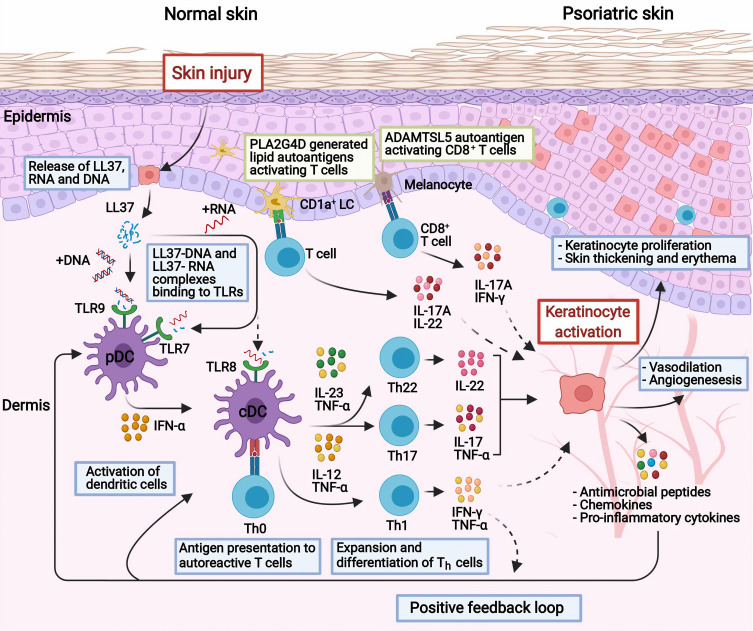Figure 1.
Current concepts of the pathogenesis in psoriasis. In response to skin injury, damaged keratinocytes release LL-37 which forms complexes with self-DNA/RNA. The complexes bind to TLRs and activate dendritic cells, which in turn promote the expansion and differentiation of autoreactive T cells through antigen presentation and secretion of cytokines. IL-23 promotes the differentiation of Th17 and Th22 cells, whereas IL-12 promotes Th1 cells. The activated Th22 and Th17 cells secrete TNF-α, IL-17 IL-22 that stimulate the keratinocytes to proliferate and produce inflammatory cytokines, chemokines, and antimicrobial peptides which further activate immune cells, enabling a positive feedback loop. Other concepts with autoantigens as triggers include; ADAMTSL5 in melanocytes which bind and activate autoreactive CD8+ T cells with subsequent release of IL-17 and IFN-γ; or PLA2G4D producing neolipid autoantigens expressed on CD1a+ dendritic cells, which upon presentation activate lipid-specific T cells secreting IL-17A and IL-22. Created with BioRender.com.
Abbreviations: ADAMTSL5, a disintegrin and metalloprotease domain containing thrombospondin type 1 motif-like 5; cDC, conventional dendritic cells; IFN, interferon; IL, interleukin; LC, Langerhans cell; LL37, cathelicidin; pDC, plasmacytoid dendritic cells; PLA2G4D, phospholipase A2 group IVD; Th, T helper cell; TLR, toll-like receptor; TNF, tumor necrosis factor.

